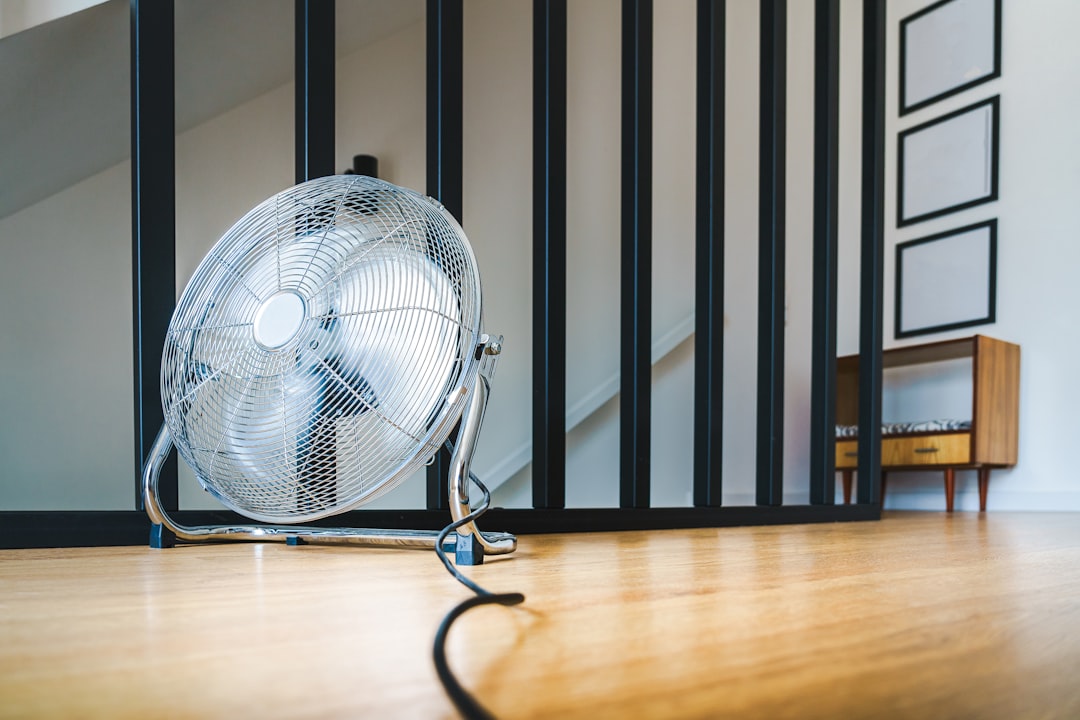
Protecting Your Home and Family: How Using Safety Features in Home Appliances Can Make a Difference
Keeping your home safe is of utmost importance, especially when it comes to the well-being of your family. Accidents can happen at any time, and the home is not exempt from potential dangers. According to statistics, household accidents are one of the leading causes of injury and even death. It is crucial to take proactive measures to ensure the safety of your loved ones and create a secure environment within your home.
Statistics on household accidents paint a grim picture. Falls and slips are the most common accidents that occur in homes, accounting for a significant number of injuries. Burns and scalds are also prevalent, particularly in the kitchen and bathroom areas. Electrical accidents, poisoning, cuts, and bruises are other common household accidents that can have severe consequences. These statistics highlight the need for implementing safety measures in our homes to prevent such accidents from occurring.
Key Takeaways
- Home safety is crucial for protecting your family from accidents and injuries.
- Common household accidents can be caused by factors such as electrical faults, slippery floors, and sharp objects.
- Safety features in home appliances, such as automatic shut-off and child locks, can prevent accidents and injuries.
- Using safety features in home appliances can save you money on repairs and medical bills in the long run.
- Safety tips for using home appliances include reading the manual, keeping appliances clean and well-maintained, and supervising children around appliances.
Common Household Accidents and Their Causes
1. Falls and slips: Falls and slips can occur due to various reasons such as slippery floors, loose rugs or carpets, cluttered walkways, or inadequate lighting. These accidents can result in broken bones, head injuries, or sprains.
2. Burns and scalds: Burns and scalds often occur in the kitchen while cooking or handling hot liquids. They can also happen in the bathroom due to hot water or faulty electrical appliances. These accidents can cause severe pain, scarring, and even permanent damage.
3. Electrical accidents: Electrical accidents can occur due to faulty wiring, overloaded circuits, or improper use of electrical appliances. They can result in electric shocks, fires, or even electrocution.
4. Poisoning: Poisoning can happen when toxic substances are ingested or inhaled accidentally. Common culprits include cleaning products, medications, pesticides, and carbon monoxide gas.
5. Cuts and bruises: Cuts and bruises can occur due to accidents with sharp objects, such as knives or broken glass. They can also happen during DIY projects or while handling tools without proper precautions.
Safety Features in Home Appliances: How They Work
Home appliances often come equipped with safety features designed to prevent accidents and ensure the well-being of users. These safety features work in various ways to minimize the risk of accidents and injuries.
For example, many kitchen appliances have automatic shut-off features. This means that if the appliance is left unattended for a certain period, it will automatically turn off to prevent overheating or potential fire hazards. This feature is particularly useful in appliances like stoves, ovens, and coffee makers.
Child locks are another common safety feature found in home appliances. They prevent young children from accessing potentially dangerous areas or operating appliances that could cause harm. Child locks are often found in refrigerators, ovens, and washing machines.
Temperature sensors are crucial safety features in appliances that generate heat, such as irons and hair straighteners. These sensors monitor the temperature and automatically shut off the appliance if it exceeds a certain threshold, preventing burns or fires.
Overload protection is a safety feature commonly found in electrical appliances like power strips or surge protectors. It prevents the circuit from becoming overloaded by cutting off the power supply if the current exceeds a safe limit. This helps prevent electrical accidents and potential fires.
Ground fault circuit interrupters (GFCIs) are safety devices installed in electrical outlets to protect against electric shocks. They monitor the flow of electricity and quickly shut off the power if they detect any imbalance or leakage. GFCIs are commonly used in bathrooms, kitchens, and outdoor areas where water is present.
Benefits of Using Safety Features in Home Appliances
| Benefits of Using Safety Features in Home Appliances |
|---|
| 1. Prevents Accidents |
| 2. Reduces Fire Hazards |
| 3. Saves Energy |
| 4. Increases Longevity of Appliances |
| 5. Provides Peace of Mind |
Using safety features in home appliances offers several benefits that go beyond accident prevention.
Firstly, using these features reduces the risk of accidents occurring in the first place. By having automatic shut-off features, child locks, temperature sensors, overload protection, and GFCIs in place, the likelihood of accidents and injuries is significantly reduced. This provides peace of mind for homeowners, knowing that they have taken proactive measures to protect their family.
Secondly, using safety features in home appliances increases peace of mind. Knowing that you have taken steps to minimize the risk of accidents can alleviate anxiety and stress. It allows homeowners to feel confident in the safety of their home environment.
Lastly, using safety features in home appliances can lead to potential cost savings. By preventing accidents and damage caused by accidents, homeowners can avoid costly repairs or medical bills. Investing in appliances with safety features can be seen as a long-term investment in the well-being and financial security of the household.
Types of Safety Features Available in Home Appliances
1. Automatic shut-off: This feature automatically turns off the appliance after a certain period of inactivity, preventing overheating or potential fire hazards.
2. Child locks: Child locks prevent young children from accessing potentially dangerous areas or operating appliances that could cause harm.
3. Temperature sensors: These sensors monitor the temperature and automatically shut off the appliance if it exceeds a certain threshold, preventing burns or fires.
4. Overload protection: This feature cuts off the power supply if the current exceeds a safe limit, preventing electrical accidents and potential fires.
5. Ground fault circuit interrupters (GFCIs): GFCIs monitor the flow of electricity and quickly shut off the power if they detect any imbalance or leakage, protecting against electric shocks.
Safety Tips for Using Home Appliances

While safety features in home appliances provide an added layer of protection, it is essential to follow general safety tips when using appliances to ensure maximum safety.
1. Read the user manual: Familiarize yourself with the appliance’s instructions and safety guidelines before using it. This will help you understand how to operate it safely and avoid potential accidents.
2. Keep appliances away from water: Water and electricity do not mix. Avoid using electrical appliances near water sources, and always keep them dry.
3. Unplug when not in use: When you are finished using an appliance, unplug it from the power source. This reduces the risk of electrical accidents and saves energy.
4. Use appliances on stable surfaces: Place appliances on stable, flat surfaces to prevent them from tipping over or falling.
5. Keep cords away from heat sources: Ensure that appliance cords are kept away from heat sources to prevent them from melting or catching fire.
When using appliances with safety features, it is essential to follow specific tips to maximize their effectiveness:
1. Test safety features regularly: Regularly test the safety features of your appliances to ensure they are functioning correctly. This includes checking automatic shut-off, child locks, temperature sensors, overload protection, and GFCIs.
2. Teach children about appliance safety: Educate children about the potential dangers of appliances and how to use them safely. Teach them not to touch or operate appliances without adult supervision.
3. Store hazardous materials properly: Keep cleaning products, medications, and other hazardous materials out of reach of children and pets. Store them in locked cabinets or high shelves.
How to Choose Home Appliances with the Best Safety Features
When purchasing home appliances, it is crucial to research and compare the safety features offered by different brands and models. Here are some steps to help you choose appliances with the best safety features:
1. Research safety features before purchasing: Before buying an appliance, research the safety features available for that particular type of appliance. Look for features such as automatic shut-off, child locks, temperature sensors, overload protection, and GFCIs.
2. Compare safety features across brands and models: Compare the safety features offered by different brands and models within your budget range. Look for appliances that have multiple safety features built-in for added protection.
3. Read reviews from other consumers: Read reviews from other consumers who have purchased and used the appliances you are considering. Pay attention to any feedback regarding safety features and their effectiveness.
By taking the time to research and compare safety features, you can make an informed decision and choose appliances that prioritize the safety of your family.
Importance of Regular Maintenance and Inspection of Home Appliances
Regular maintenance and inspection of home appliances are crucial for ensuring their continued safety and functionality. Here are some steps to follow:
1. Check for wear and tear: Regularly inspect your appliances for any signs of wear and tear. Look for frayed cords, loose connections, or damaged parts. If you notice any issues, repair or replace the appliance as necessary.
2. Clean appliances regularly: Clean appliances regularly to remove dust, dirt, and debris that can affect their performance. Follow the manufacturer’s instructions for cleaning each appliance.
3. Schedule professional inspections: Consider scheduling professional inspections for your appliances, especially those that are older or have complex safety features. Professionals can identify potential issues and ensure that your appliances are in good working condition.
By maintaining and inspecting your appliances regularly, you can catch any potential problems early on and prevent accidents or breakdowns.
Emergency Preparedness: What to Do in Case of Accidents
Despite taking all necessary precautions, accidents can still happen. It is essential to be prepared and know what to do in case of emergencies. Here are some first aid tips for common household accidents:
1. Falls and slips: If someone falls or slips, assess the situation for any injuries. If there are visible injuries or severe pain, call emergency services immediately. Otherwise, help the person up slowly and assist them in moving to a safe area.
2. Burns and scalds: For minor burns or scalds, run cool water over the affected area for at least 10 minutes to relieve pain and prevent further damage. For more severe burns, call emergency services immediately.
3. Electrical accidents: If someone receives an electric shock, turn off the power source if possible or use a non-conductive object to separate the person from the electrical source. Call emergency services immediately.
4. Poisoning: If someone ingests a toxic substance, call emergency services immediately. Do not induce vomiting unless instructed by medical professionals.
5. Cuts and bruises: For minor cuts and bruises, clean the wound with mild soap and water, apply an antiseptic, and cover with a sterile bandage. For deep cuts or excessive bleeding, apply pressure to the wound and seek medical attention.
Knowing when to call emergency services is crucial in case of severe accidents or injuries. If in doubt, it is always better to err on the side of caution and seek professional medical help.
Making Your Home a Safe Haven for Your Family
In conclusion, prioritizing home safety is essential for creating a secure environment for your family. By understanding common household accidents and their causes, as well as the safety features available in home appliances, you can take proactive measures to prevent accidents from occurring.
Using safety features in home appliances offers numerous benefits, including reduced risk of accidents, increased peace of mind, and potential cost savings. By following safety tips for using appliances and choosing appliances with the best safety features, you can further enhance the safety of your home.
Regular maintenance and inspection of home appliances are crucial for ensuring their continued safety and functionality. In case of accidents, being prepared with first aid knowledge and knowing when to call emergency services can make a significant difference in minimizing the impact of injuries.
By prioritizing home safety and implementing necessary measures, you can transform your home into a safe haven for your family.
FAQs
What is the article about?
The article is about how many home appliances are made safer by using certain technologies and features.
What are some of the technologies used to make home appliances safer?
Some of the technologies used to make home appliances safer include automatic shut-off features, child locks, and sensors that detect overheating or other potential hazards.
Why is it important for home appliances to be safe?
It is important for home appliances to be safe because they can pose serious risks to people and property if they malfunction or are used improperly. Safety features can help prevent accidents and injuries.
What are some examples of home appliances that have safety features?
Examples of home appliances that have safety features include ovens with automatic shut-off features, washing machines with child locks, and space heaters with tip-over switches.
How do safety features affect the cost of home appliances?
Safety features can increase the cost of home appliances, but they are often worth the investment because they can help prevent accidents and injuries.
What should consumers look for when purchasing home appliances?
Consumers should look for home appliances that have safety features such as automatic shut-off features, child locks, and sensors that detect potential hazards. They should also read the manufacturer’s instructions and follow them carefully to ensure safe use of the appliance.


















